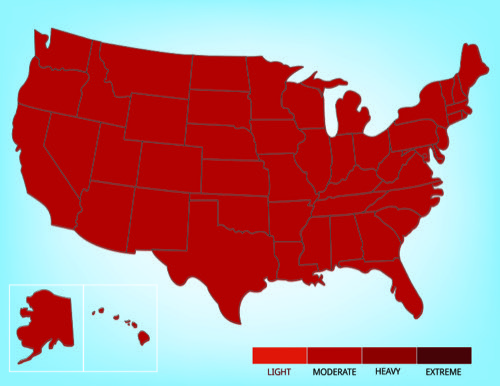
Holes in your hardwoods, furniture, and other wooden structures in and around your home could be a sign of wood-boring beetles. These beetles lay their eggs in wood, then the larvae, known as woodworms, burrow their way out of the wood as they grow into adults.
There are several types of beetles that can be considered "wood-boring," including powderpost beetles, common furniture beetles, and old house borer beetles. Fortunately, they all share very similar identifying characteristics, both as adults and as woodworms.
Use this guide to understand what wood-boring beetles are and explore effective wood-boring beetle treatment options.
Choose a topic below to learn more about wood-boring beetles, or keep reading to learn how to identify them.

Adult wood-boring beetles are less than 1 inch long, ranging from 0.25 inch to 0.625 inch (1/4 to 5/8 inch) long.
Woodworms range from 0.039 - 0.28 inch (1 to 7 millimeters) long.

Adult beetles have a head, thorax, and body. They have a hard exoskeleton and wings. Beetles have six legs and antennae on the top of their heads.
Woodworms (larvae or immature beetles) look like small, fat worms. They have ridged bodies that can curl as they move.

Wood-boring beetles range in color.
Powderpost beetles can be either black or rusty red as adults. Old house borer beetles are black or grey as adults. Common furniture beetles are black, brown, or rust colored as adults.
The woodworms of all wood-boring beetles have white or cream-colored bodies with dark heads.
Emergence Holes and Tunnels

Wood-boring beetles are most commonly identified by the emergence holes they leave in wood. Homeowners may see emergence holes or tunnels in wood beams, hardwood floors, wood planks, or furniture without spotting any pests.

Wood-boring beetles can be found across the United States. They are commonly seen in forests and areas of high humidity.
Believe you have wood-boring beetles or woodworms? Read the next part of our guide to learn more about where wood-boring beetles hide. Click the right arrow below to learn more.



